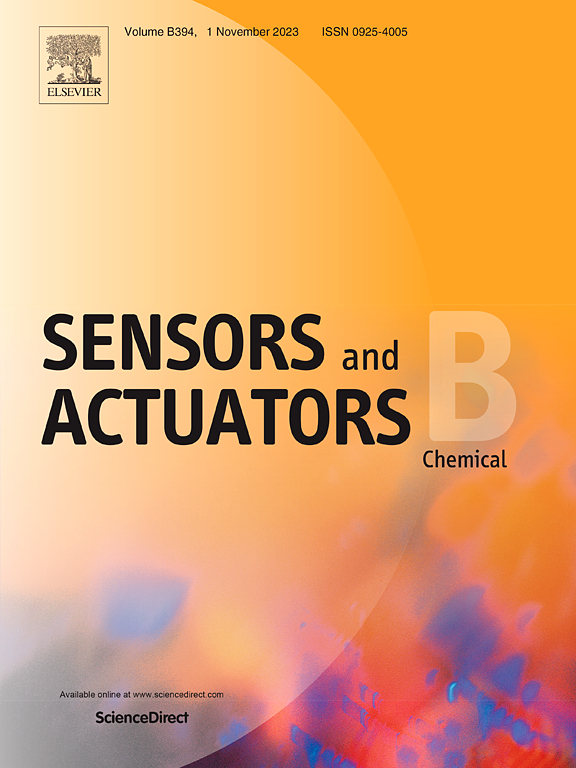基于mxenes的传感器工程进展:向先进传感技术的过渡
IF 8
1区 化学
Q1 CHEMISTRY, ANALYTICAL
引用次数: 0
摘要
MXenes是一个二维群体,在科学领域开辟了一个新的前沿,因为它们在现实世界中的应用是深远的,包括电池、超级电容器、催化剂、电子和光学。MXenes具有可调节的电性能、高导电性和大量的表面官能团,这使得它们对气体传感应用极具吸引力。本文综述了基于mxene的气体传感器的最新进展,强调了取代传统HF蚀刻的环境友好型合成方法。讨论了MXenes的光学、热学、力学和气敏特性。此外,本文还探讨了旨在增强传感能力的改进,包括官能团控制、缺陷工程、异质结构形成、光辅助和贵金属掺杂。系统比较了各种增强方法的优点和局限性。为了便于比较,我们将每种气敏增强方法的优点和局限性列了出来。本文还讨论了基于Ti3C2Tx的第一性原理DFT分析的MXene电导率的计算分析。讨论了主成分分析,它用于机器学习和数据分析,以识别复杂数据集中的模式并确定哪些变量最重要。本综述的续篇讨论了自供电气体传感器、它们与物联网(IoT)的集成、气体传感器的商业可行性和可扩展性,并详细分析了它们在鱼类市场的应用。该综述总结了基于mxene的气体传感器的现有挑战和未来方向,强调了改进合成技术、更好地理解传感机制和长期材料稳定性策略的必要性。本文章由计算机程序翻译,如有差异,请以英文原文为准。
Advances in the engineering of MXenes-based sensors: A transition towards advanced sensing technologies
MXenes are a two-dimensional group that have opened a new frontier in science, as their real-world applications are far-reaching, including batteries, supercapacitors, catalysts, electronics, and optics. MXenes possess adjustable electrical properties, high conductivity, and plenty of surface functional groups, compelling them to be extremely attractive for gas sensing applications. This review provides a comprehensive analysis of recent advancements in MXene-based gas sensors, emphasizing environmentally friendly synthesis methods that are replacing traditional HF etching. The properties of MXenes, encompassing their optical, thermal, mechanical, and gas-sensing characteristics, were discussed. Furthermore, the review examines modifications aimed at enhancing sensing capabilities, including functional group control, defect engineering, heterostructure formation, light assistance, and noble metal doping. Each enhancement method is systematically compared in terms of advantages and limitations. The advantages and limitations of each gas-sensing enhancement method were conveniently tabulated for ease of comparison. A computational analysis of the conductivity of an MXene based on the first principle DFT analysis on Ti3C2Tx is also discussed. A principle component analysis, which is used in machine learning and data analysis to identify patterns in complex datasets and identify which variables are most important, was discussed. The encore of this review discusses self-powered gas sensors, their integration into the Internet of Things (IoT), and the commercial viability and scalability of gas sensors, with a detailed analysis of their application in the fish market. The review concludes by addressing existing challenges and future directions in MXene-based gas sensors, underscoring the need for improved synthesis techniques, a better understanding of sensing mechanisms, and strategies for long-term material stability.
求助全文
通过发布文献求助,成功后即可免费获取论文全文。
去求助
来源期刊

Sensors and Actuators B: Chemical
工程技术-电化学
CiteScore
14.60
自引率
11.90%
发文量
1776
审稿时长
3.2 months
期刊介绍:
Sensors & Actuators, B: Chemical is an international journal focused on the research and development of chemical transducers. It covers chemical sensors and biosensors, chemical actuators, and analytical microsystems. The journal is interdisciplinary, aiming to publish original works showcasing substantial advancements beyond the current state of the art in these fields, with practical applicability to solving meaningful analytical problems. Review articles are accepted by invitation from an Editor of the journal.
 求助内容:
求助内容: 应助结果提醒方式:
应助结果提醒方式:


